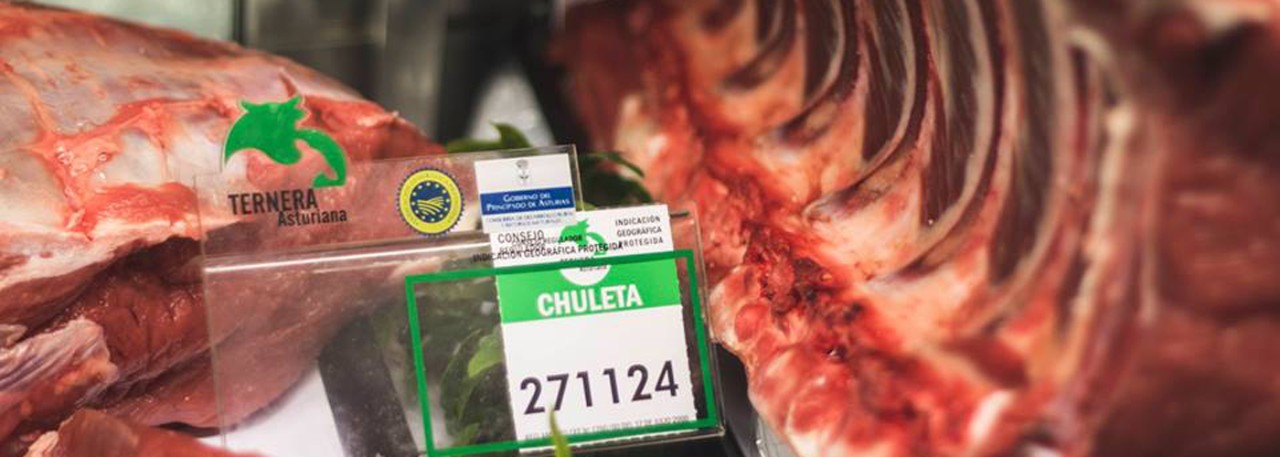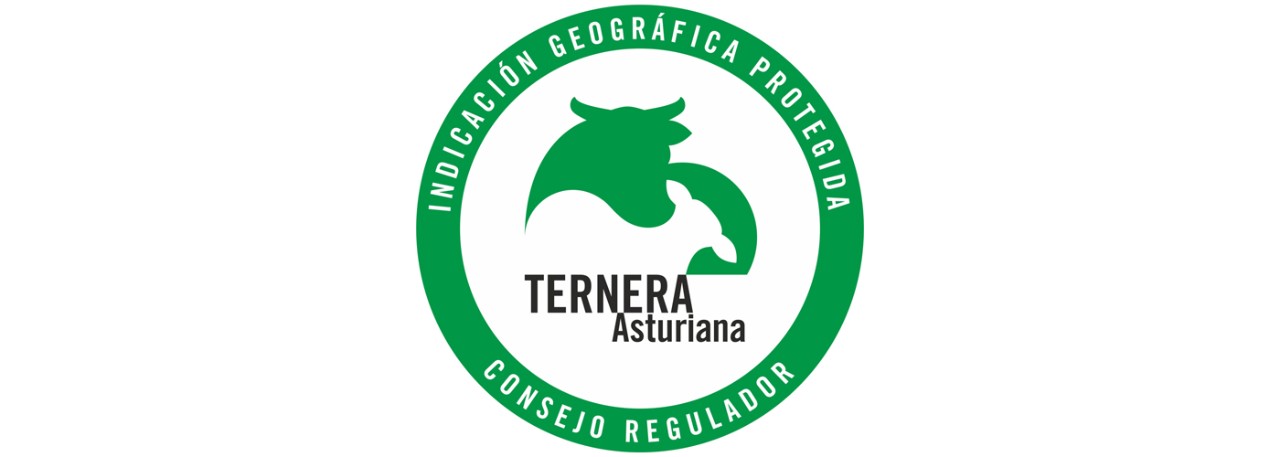.png.transform/rendition-xs/image_image%20(1).png)
Ternera Asturiana PGI
Veal from cattle born, bred and fattened in Asturias from the Asturiana de los Valles and Asturiana de la Montaña breeds and crossbreeds between them. Crossbreeds are also allowed between purebred males of the Asturiana de los Valles and Asturiana de la Montaña breeds with females that are genetically of the Asturian native breeds but are not totally pure and have some morphological characteristics which do not tally with the breed standard.
Tasting notes
The Asturiana de los Valles stands out for its flavor and tenderness, and the Asturiana de la Montaña for its flavor and succulence.
Other notes
The Asturiana de los Valles and Asturiana de la Montaña breeds are morphologically similar. The main differences are in the horns, which are characteristic in each case, the length of the head which is shorter in the Valles breed, and the depth of the chest and width between the haunches which are proportionally greater in the Montaña breed.
Both breeds stem from the stock known as the Tronco castaño comprising breeds with chestnut-colored hair, dark extremities and black or dark grey mucous membranes, eye sockets, tail tassel, crown tufts, hoofs and the scrotum in males. In the males of both breeds, the hide is darker, with black hairs on the neck, dewlap and hindquarters.
The color of the meat varies from red to light red or pink. The pH 24 hours after slaughter must be below six.
Production / Processing method
The meat comes from cattle born, bred and fattened within the production area that have suckled their mother’s milk for a minimum of five months.
Their feed is that of extensive farming, that is, mother’s milk and natural pasture. After weaning, they receive cereal and legume supplements. The cattle must be reared, slaughtered, dressed and stored in registered facilities in compliance with the regulations.
After transportation to registered slaughterhouses for slaughter, the meat is cut, stored and matured in authorized establishments.
Geography / Relief and climate
Asturias has very irregular relief, with great physiographic contrasts. The dividing-lines are made up of resistant materials such as quartzite, sandstone and compact limestone dating from the Paleozoic, whereas the valleys have been dug out of soft slate from the Silurian, Devonian or Carboniferous. The soils used for farming are brown and are located along fluvial terraces, have good permeability and low calcium carbonate content.
The area has warm, cool winters, with plenty of rain all year round but somewhat heavier in winter. The coastal area is characterized by Mediterranean maritime and warm maritime climates. In the precoastal depression and the central coal-producing basin, the warm Mediterranean climate alternates with a warm temperate climate. Temperatures during the cultivation period vary between 20 and 30ºC (68-86 ºF).
The rivers are short, have a small catchment area and high flow volume. From east to west, the main river basins are those of the rivers Deva, Sella, Nalón and Navia rivers.
Regulatory Council
Consejo Regulador de la IGP Ternera Asturiana
Venta de la Uña, s/n
Mercado Nacional de Ganado
33510 Pola de Siero (Asturias)
Tel.: (+34) 985 725 777
correo@terneraasturiana.org
www.terneraasturiana.org
Sources:
- Spanish Ministry of Agriculture
The color of the meat varies from red to light red or pink.


- Ternera Asturiana 1
- Ternera Asturiana 2

Pola de Siero (Asturias)
